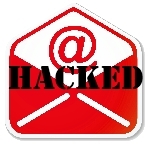
By Suzanne Kantra for Techlicious
Yesterday, I got an interesting email from my mother-in-law. The message, rife with grammatical errors, contained a link directing me to a Filipino-registered website with a pitch on how to make money working from home. Was this her way of telling me I should earn more money to support her grandchildren? No, just evidence that her email had been hacked.
When I called my mother-in-law, she already knew about the problem—the hacker’s message had gone out to her entire address book—and was very concerned. So I walked her through the steps to get everything back in order.
Step #1 – Change your password
The very first thing you want to do is keep the hacker from getting back into your email account. So change your password, and be sure to use a strong password that is not related to your prior password. I.e., if your last password was “billyjoe1”, don’t pick “billyjoe2”. And if your name is BillyJoe, you shouldn’t have been using your name in your password in the first place.
Step #2 – Check you email settings
Sometimes hackers will change your settings to forward a copy of every email you receive to themselves. This way, they can monitor future emails that may contain login information for other sites. So check your mail forwarding settings to ensure no unexpected email addresses have been added.
Second, check your email signature to see if the hacker added a spammy signature that will continue to peddle their dubious wares even after they’ve been locked out.
Article Continued Here
This post is excerpted with permission from Techlicious.
PC Pitstop is proud to welcome our friends at Techlicious as guest contributors. Founded by consumer tech guru, Suzanne Kantra, Techlicious is your daily scoop on everything from the best new mobile phones and apps to holiday shopping guides to step-by-step instructions for protecting your privacy on the Internet.




